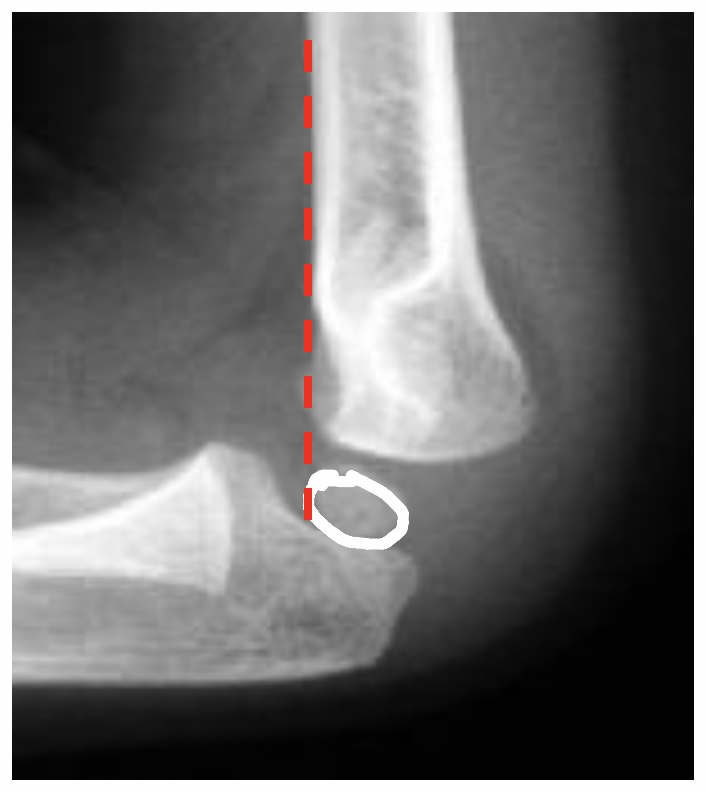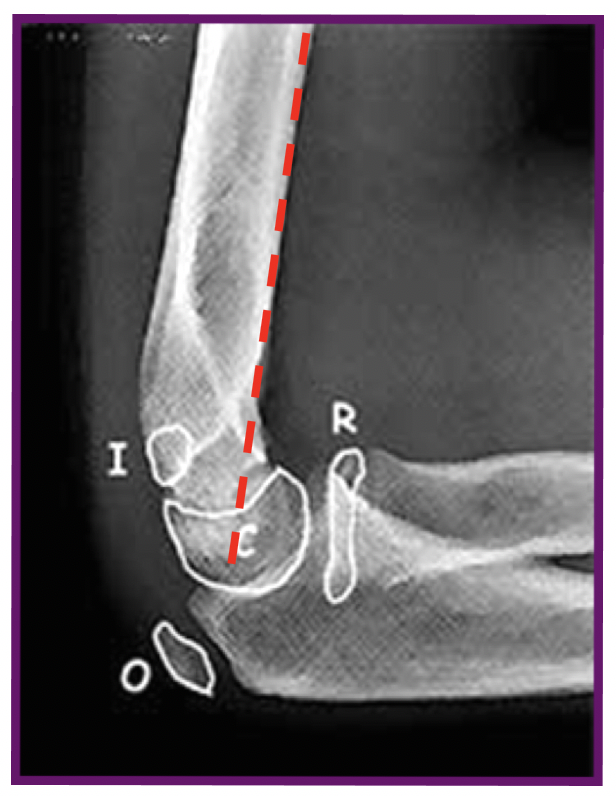Pediatrics Case 10 Diagnosis
Diagnosis is with plain radiographs. The fracture line may not be visible if it is through a growth plate so assessment for malalignment and soft tissue findings of effusion are crucial. A true lateral film is the most important view for assessing for these and must be insisted upon.
On a true lateral film, an effusion will cause the fat pads to displace through the fascial planes of least resistance and become visible. The anterior fat pad will dissect more proximally and assume a triangular shape, the “anterior sail sign”. Effusion will displace the posterior fat pad, which is normally sitting in the olecranon fossa and is not visible, further posteriorly and will become visible. The visualization of any posterior fat pad or a sail sign in the setting of trauma confirms traumatic effusion and the presence of a fracture, even if there is no visible fracture line.
The anterior humeral line is essential to assess for displacement. On a normal true lateral radiograph, a line drawn down the anterior border of the humerus should bisect the posterior two-thirds of the capitellum (as shown in Figure 1). In Figure 2, the anterior line appears to cross the anterior one-third of the capitellum (outlined in white), confirming a posteriorly displaced supracondylar fracture.
Figure 1: Normal radiograph of an elbow. The anterior humeral line transects the posterior 2/3 of the capitellum, which is labeled with "C"

